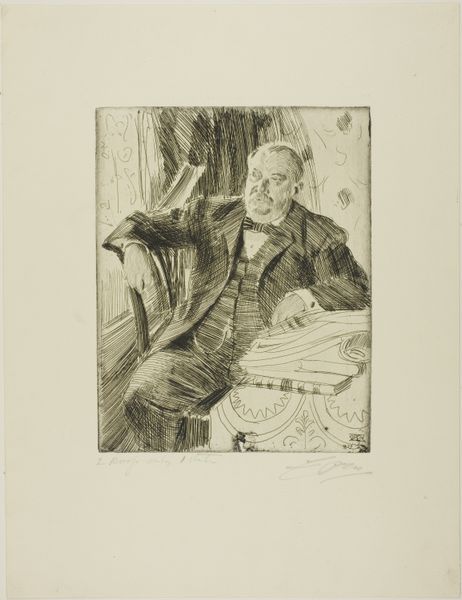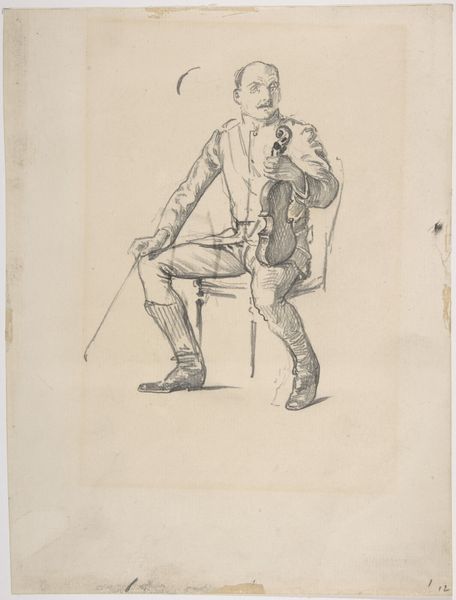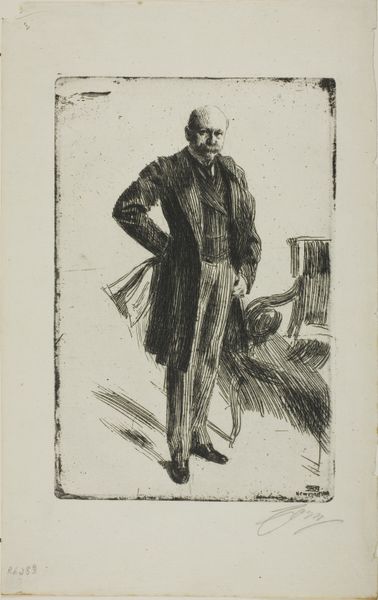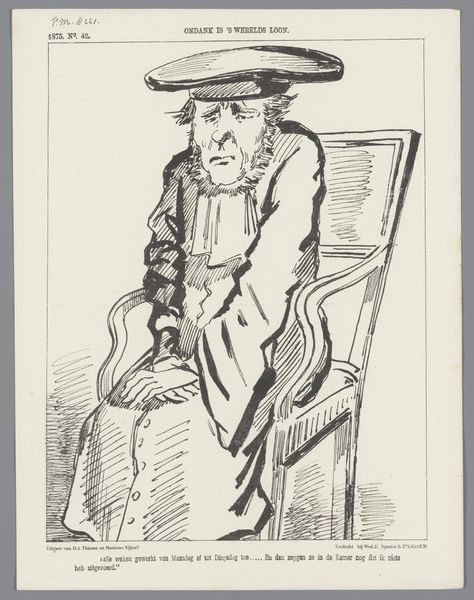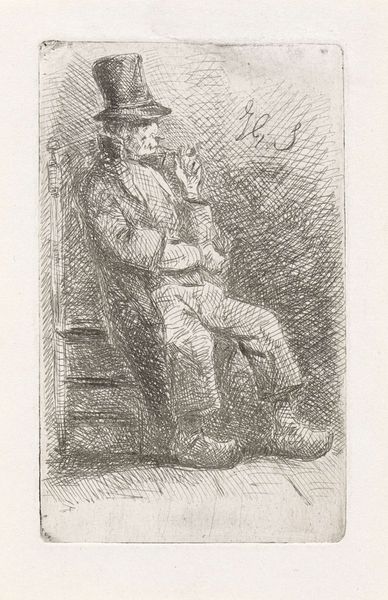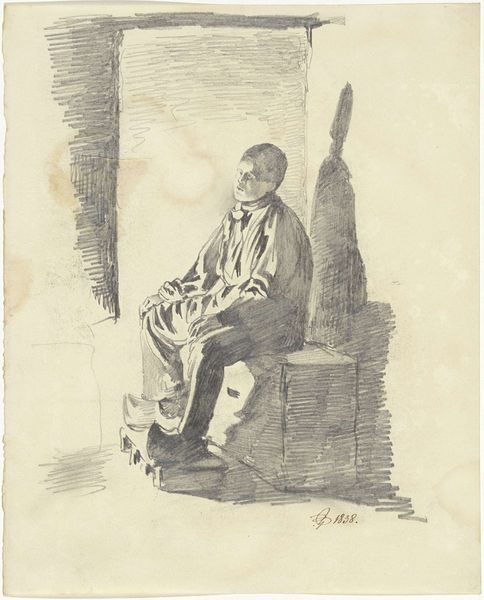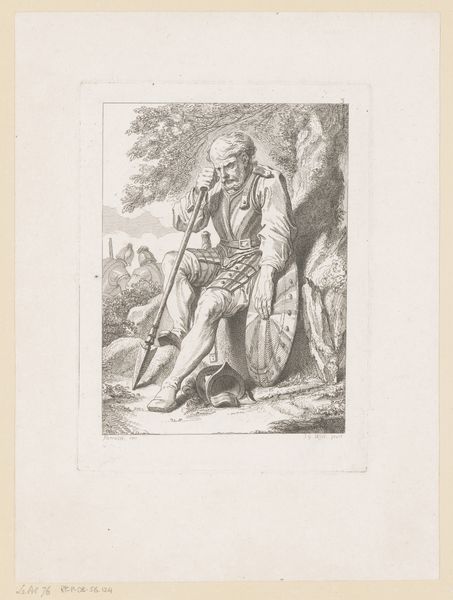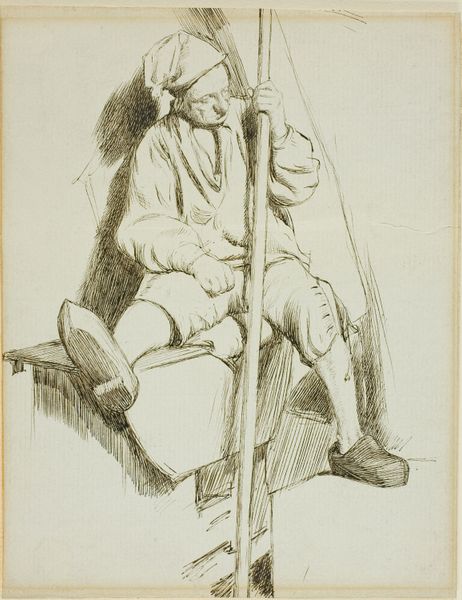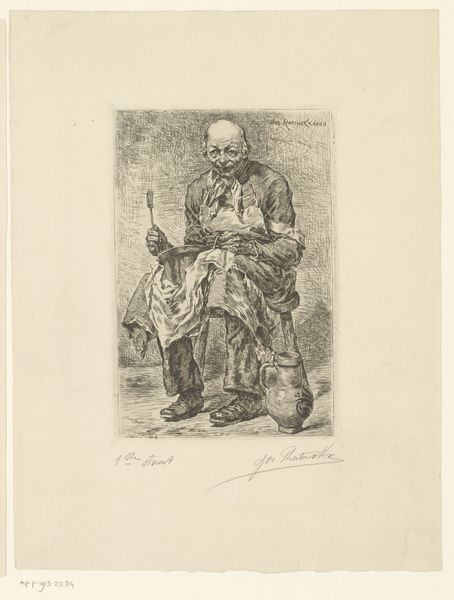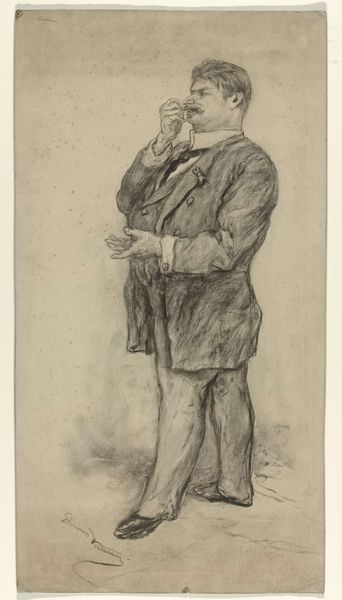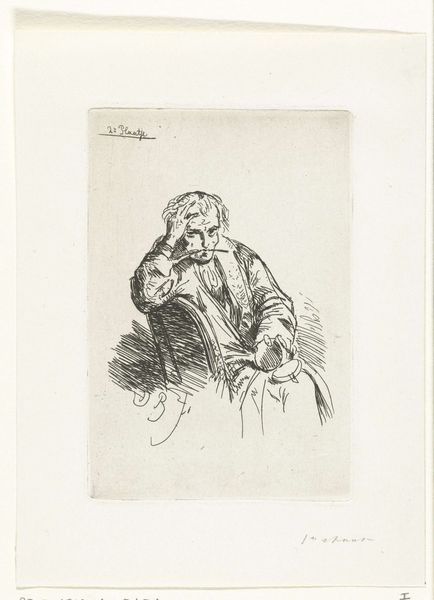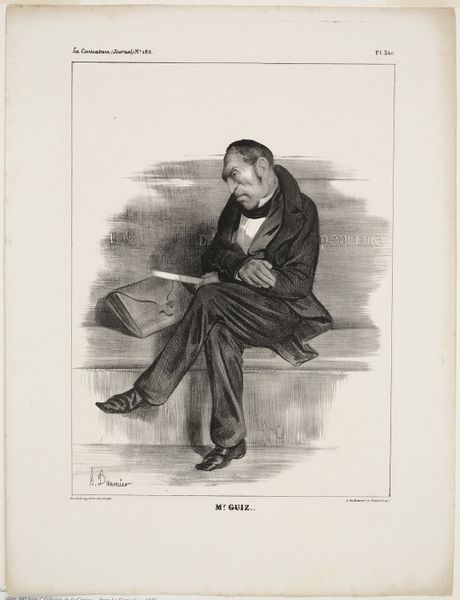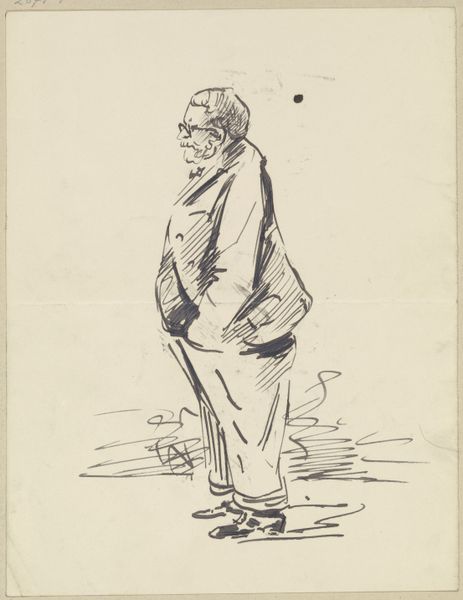
Op de lezing over het Teekenonderwijs op de Lagere School 1890 - 1897
0:00
0:00
drawing, ink, pen
#
portrait
#
drawing
#
pen sketch
#
figuration
#
ink
#
pen
#
realism
Dimensions: height 200 mm, width 143 mm
Copyright: Rijks Museum: Open Domain
Editor: This ink and pen drawing, titled "Op de lezing over het Teekenonderwijs op de Lagere School", dates from around the 1890s and is held at the Rijksmuseum. It feels so… observational. The detail in the man's face really conveys a sense of contemplation. What do you see in this piece, particularly considering its context? Curator: Well, the title translates to “At the Lecture on Drawing Education in Primary School," which immediately frames the image within a specific socio-political context: the late 19th century debates surrounding public education and the role of art within it. The sitter, identified as jonkheer Victor Eugène Louis de Stuers, was a key figure in Dutch cultural policy. Think about the significance of his attendance. Was he there to advocate for or scrutinize drawing education? Editor: That’s interesting; I hadn’t thought about his personal involvement. His slightly weary posture could suggest skepticism or even boredom. Curator: Exactly! This brings up questions about the public role of art and the politics of imagery. This wasn’t just a neutral observation. The very act of sketching him at this lecture—likely a staged moment—points to a critical engagement with the direction of art education in the Netherlands. Consider the subtle visual cues, like the contrast between his sophisticated attire and the rather spartan setting suggested by the bare chair. How does this tension play into the broader cultural narrative of the time? Editor: It definitely highlights a potential class divide and perhaps the limitations of the existing system. So it’s not just a portrait, it’s a commentary on educational policy through visual storytelling. Curator: Precisely. By framing the drawing within its socio-political milieu, we can unpack its deeper layers of meaning. Editor: This makes me see it in a totally different light, not just as a portrait but as a document reflecting debates on art's role in society. Curator: And that's how museums and socio-political forces work to shape art's production and its lasting resonance.
Comments
No comments
Be the first to comment and join the conversation on the ultimate creative platform.
